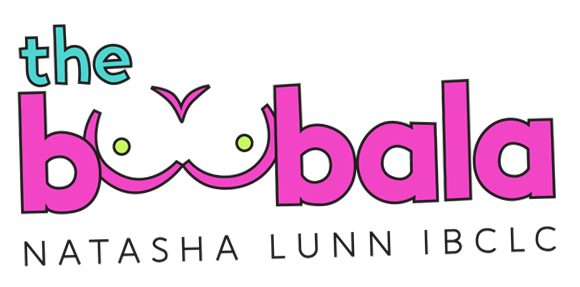Page Content
- Will pumping every 2 hours increase milk supply?
- What to drink to increase breast milk?
- Does drinking increase breast milk?
- What triggers more breast milk?
- How long do breasts take to refill?
- Which foods help to increase breast milk?
- What is the 5 5 5 rule for breast milk?
- How do I get my breast milk to produce more?
- Does drinking water increase breast milk?
- Do soft breasts mean low milk supply?
Understanding Breast Milk Production
Breast milk is a remarkable substance, uniquely tailored to meet the nutritional needs of infants. The process of milk production, known as lactation, begins shortly after childbirth and evolves significantly in the days and weeks that follow.
The Onset of Milk Production
Typically, breast milk production ramps up between two to four days after birth, a period often referred to as when the milk “comes in.” Initially, mothers produce colostrum, a thick, yellowish fluid rich in antibodies and nutrients, which is crucial for the newborn’s immune system. This early milk is produced in smaller quantities but is highly concentrated with essential nutrients and immunological factors.
The Role of Hormones
Hormones play a pivotal role in the initiation and maintenance of milk production. After delivery, the drop in progesterone and estrogen levels, combined with the rise in prolactin, signals the mammary glands to start producing milk. Prolactin is the hormone primarily responsible for milk synthesis, while oxytocin facilitates the milk-ejection reflex, allowing milk to flow when the baby suckles.
Supply and Demand Mechanism
Once the milk comes in, the production of breast milk operates on a supply-and-demand basis. This means that the more frequently and effectively a baby feeds, the more milk the mother will produce. When a baby suckles, it stimulates nerve endings in the nipple, sending signals to the brain to release more prolactin and oxytocin, thus increasing milk production and facilitating the let-down reflex.
Factors Influencing Milk Supply
Several factors can influence the volume of breast milk produced. Hydration, nutrition, and overall health of the mother are critical. A well-balanced diet rich in calories and nutrients supports milk production. Additionally, frequent breastfeeding or pumping can help establish and maintain a robust milk supply.
Stress and fatigue can negatively impact milk production, as they may interfere with the hormonal balance necessary for lactation. Therefore, creating a supportive environment for breastfeeding is essential for mothers to optimize their milk supply.
Conclusion
In summary, the process of breast milk production is a complex interplay of hormonal changes, physiological responses, and the dynamic relationship between mother and baby. Understanding these mechanisms can empower new mothers to navigate the challenges of breastfeeding and ensure their infants receive the best possible nutrition during those crucial early months of life.
Will pumping every 2 hours increase milk supply?
Pump more often, from both breasts
Many women wonder how often they should pump. A general guideline is to pump every three hours. But if you’re trying to produce more breast milk, you can: Try pumping both breasts for 15 minutes every two hours for 48-72 hours.
What to drink to increase breast milk?
6 of the Best Drinks for Breastfeeding Moms. Key takeaways: While breastfeeding, your body has higher nutrient and fluid needs. Plain water, cow’s milk, herbal tea, smoothies, coconut water, and juice are good drink options during lactation.
Does drinking increase breast milk?
Alcohol also can affect the ability to safely care for a baby. Over time, drinking too much might cause the body to make less breast milk. Delay pumping or breastfeeding your baby two hours for each alcoholic drink you consume.
What triggers more breast milk?
Frequent feeding or pumping will cause your body to make more milk.
How long do breasts take to refill?
Milk is actually produced nonstop—before, during, and after feedings—so there’s no need to wait between feedings for your breasts to refill.
Which foods help to increase breast milk?
Foods That Promote Milk Production
- Whole grains, especially oats and barley.
- Protein-rich foods like fish, chicken, meat, or tofu.
- Legumes or beans like chickpeas and lentils.
- Leafy green vegetables like kale, spinach, and arugula.
- Fennel or fennel seeds.
- Nuts.
- Alfalfa sprouts.
- Garlic.
What is the 5 5 5 rule for breast milk?
Something I recommend to moms is the 5-5-5 rule. Try and use milk within five hours at room temperature, five days in the fridge, and by five months in the freezer.
How do I get my breast milk to produce more?
Feed your baby from your breast whenever you can. Get plenty of sleep, and eat a healthy diet. Pump or express your milk. Pumping or expressing milk frequently between nursing sessions, and consistently when you’re away from your baby, can help build your milk supply.
Does drinking water increase breast milk?
Some mothers may need more or less. It is important to listen to your body and drink when you feel thirsty. Drinking excess fluids will not help increase your milk supply.
Do soft breasts mean low milk supply?
You do not have low milk supply because your breasts feel softer than they used to. The excessive fullness we experience in the early days of breastfeeding is about vascular engorgement (blood and lymph) and it’s about the body inefficiently storing unnecessary amounts of milk between feeds.

